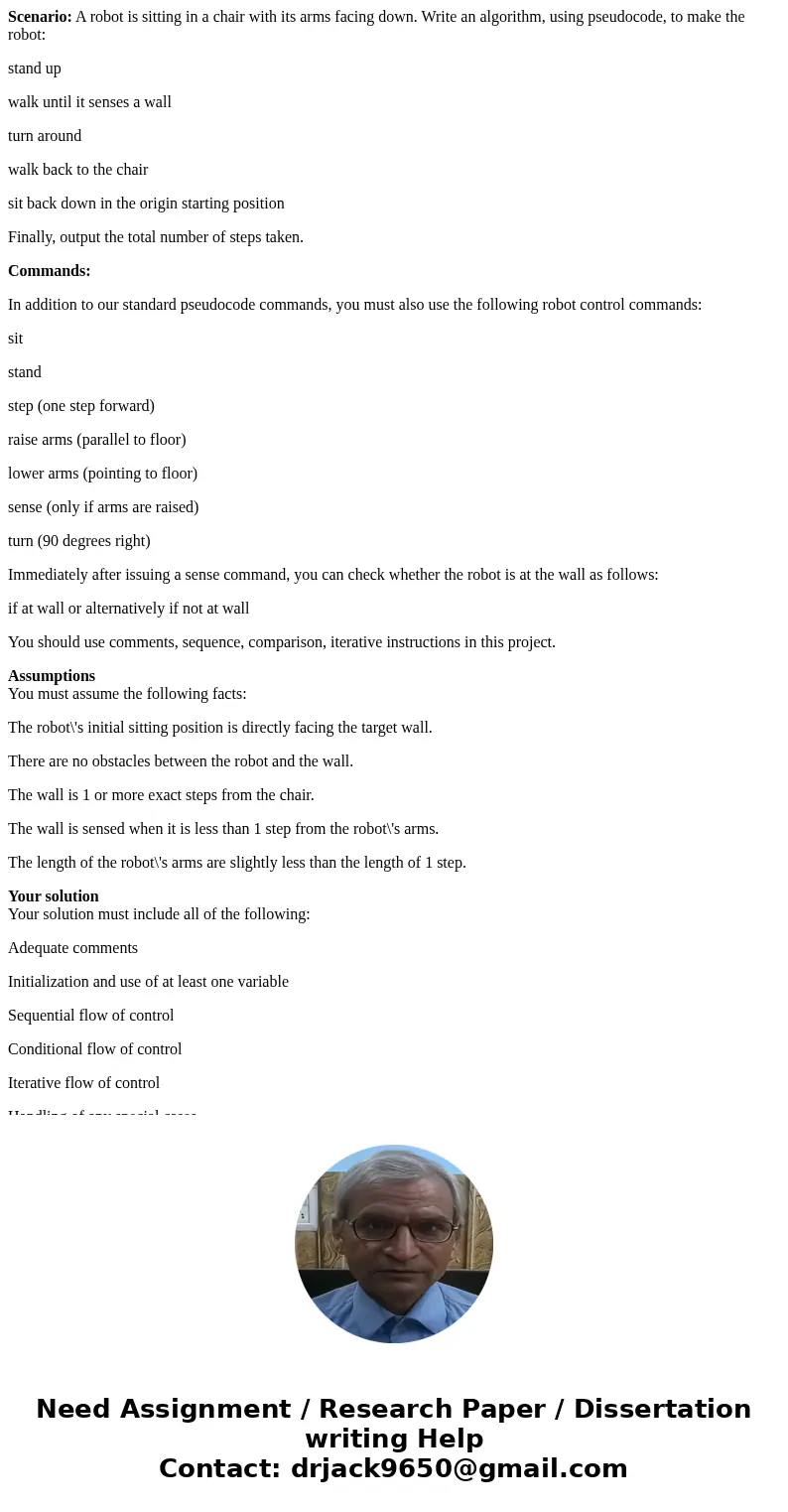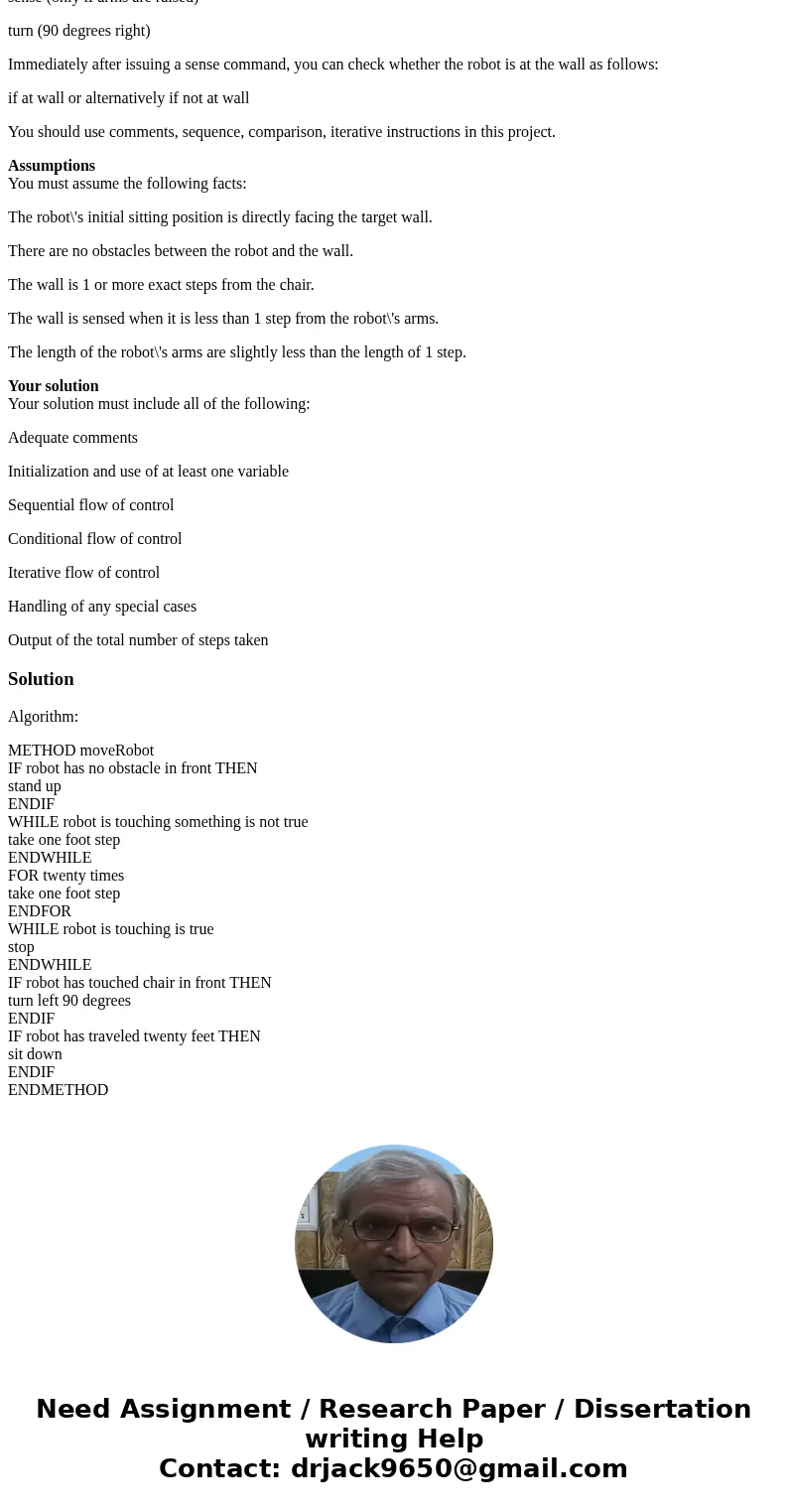Scenario A robot is sitting in a chair with its arms facing
Scenario: A robot is sitting in a chair with its arms facing down. Write an algorithm, using pseudocode, to make the robot:
stand up
walk until it senses a wall
turn around
walk back to the chair
sit back down in the origin starting position
Finally, output the total number of steps taken.
Commands:
In addition to our standard pseudocode commands, you must also use the following robot control commands:
sit
stand
step (one step forward)
raise arms (parallel to floor)
lower arms (pointing to floor)
sense (only if arms are raised)
turn (90 degrees right)
Immediately after issuing a sense command, you can check whether the robot is at the wall as follows:
if at wall or alternatively if not at wall
You should use comments, sequence, comparison, iterative instructions in this project.
Assumptions
You must assume the following facts:
The robot\'s initial sitting position is directly facing the target wall.
There are no obstacles between the robot and the wall.
The wall is 1 or more exact steps from the chair.
The wall is sensed when it is less than 1 step from the robot\'s arms.
The length of the robot\'s arms are slightly less than the length of 1 step.
Your solution
Your solution must include all of the following:
Adequate comments
Initialization and use of at least one variable
Sequential flow of control
Conditional flow of control
Iterative flow of control
Handling of any special cases
Output of the total number of steps taken
Solution
Algorithm:
METHOD moveRobot
IF robot has no obstacle in front THEN
stand up
ENDIF
WHILE robot is touching something is not true
take one foot step
ENDWHILE
FOR twenty times
take one foot step
ENDFOR
WHILE robot is touching is true
stop
ENDWHILE
IF robot has touched chair in front THEN
turn left 90 degrees
ENDIF
IF robot has traveled twenty feet THEN
sit down
ENDIF
ENDMETHOD


 Homework Sourse
Homework Sourse